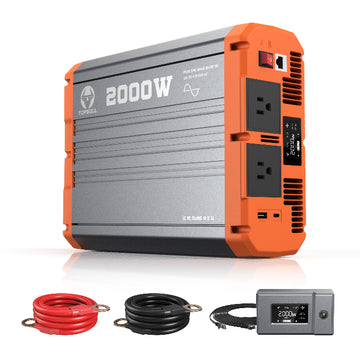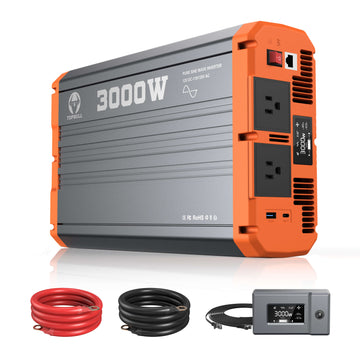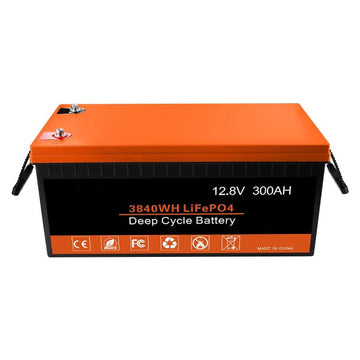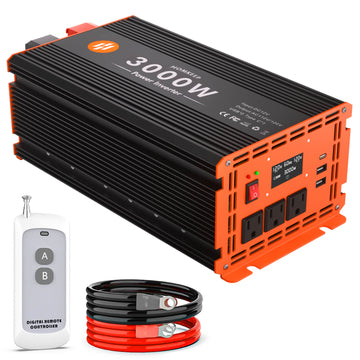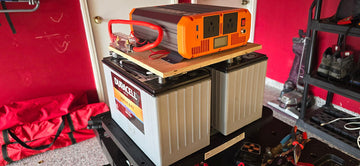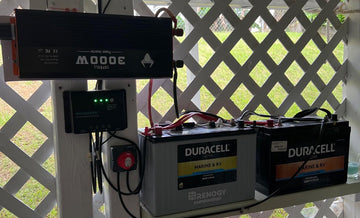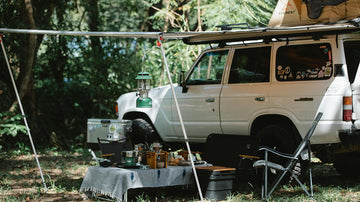If you're new to DIY solar and planning to install solar panels on your home, be prepared for a thorough paperwork and permitting process. Typically, local authorities require homeowners to obtain a permit before installing panels. Once the photovoltaic system is installed, a local government professional will inspect the new system to ensure it meets all building, electrical, and safety codes. The process is very long and complicated, but don't worry, here's a guide to getting a permit for a DIY solar system.
Before installing solar panels, you'll need to obtain a permit from the AHJ that oversees the work:
- Your local building authority, which can refer to your city or county
- Your electric utility (approval to interconnect to the grid)
- Your homeowner's association (HOA) (if any)
Permit filing methods
In-person: Some AHJs require you to submit your permit application in person at their office with all the necessary documents and forms.
Online Portal: Many AHJs offer an online permit application option through a user-friendly web portal.
Email: Compile all required documents into one email and send them to the permit email address provided by the AHJ.
Permit type
Building permit: If you are making structural changes or adding equipment to your home, such as installing solar panel racking or storage, you will need a building permit.
Electrical permit: For electrical work, including inverter installation and grid connection, you may need an electrical work permit.
Solar permit: Apply for a permit application for your solar system to ensure that it meets local building and safety codes.
Steps to apply
Interconnection agreement
To ensure that your system is safe and up to code, you must contact your utility company to complete an Interconnection Request Form. This agreement approves your safe connection to the utility grid if your system is designed to meet the latest National Electrical Code and local code requirements. Typically, the agreement will require the following information:
- Location of major service or utility interruptions.
- Total number of modules, number of modules per string, total number of strings.
- Make and model of inverter and/or converter box, if used.
- Single wire diagram of the system.
- Specify earthing/splicing, conductor type, and size, cable type and size, number of conductors per cable section.
- If batteries are to be installed, include them on the diagram and show their location and ventilation openings.
- Equipment nomenclature sheets, including inverters, modules, AC and DC breakers, combiners, and wind turbines.
Building permits
You'll also need to apply for planning permission from your local AHJ (usually the town planning office), which regulates buildings and requires you to ensure that your roof is properly designed to support the extra weight of the solar panels. While most new buildings are usually fine, older homes may have roofs that are damaged or unable to support the extra load. In this case, you have the option of repairing/replacing your roof or considering a ground-mounted solar system.
The building department will review your application and may require changes to comply with building regulations.
To find a copy of this application, Google 'solar permit application [your location]' and download the form from your council's website. If you can't find it, call them and tell them you want to get a new solar system approved, and they'll send you the application form.
Solar Panel Licence: Rooftop vs. Ground Mounted
Depending on the location of the installation, you may need to obtain different licenses. Rooftop systems are generally considered to be retrofit to an existing structure, which means that your city may consider it a remodel or renovation license. Rooftop installations require a structural assessment of the building to ensure that the roof can support the weight of the solar panels and avoid potential water leaks and occupant safety hazards. Ground-mounted systems are likely to be considered new construction because they are not attached to an existing structure.
HOA approval
In addition to a detailed solar plan, some cities require you to submit a stamped letter of approval from your homeowner's association (HOA) before they begin the permitting process. The HOA, often designed to preserve the appearance and value of the community, sets standards for the installation of solar panels, including appearance, location, and tilt angle to ensure the system is in harmony with the architectural style of the community.
Paying the license fee
After submitting your application, you will also need to pay the permit fee, which is usually a few hundred dollars and varies from utility company to utility company and government to government. Remember to pay the permit fee within the required timeframe to avoid delays in the approval process. Once payment has been made, keep all documents and records relating to the payment of the permit fee as proof that you have paid the fee.
Getting approved
After formally applying for a permit, your local AHJ or utility will review your application. If your permit is denied, they will usually tell you what changes you need to make to meet local codes, so that the design can be modified and resubmitted for approval.
Depending on how busy the local office is, it may take days or even weeks for the application to be processed. We recommend that you double-check your application before submitting it to avoid long delays. Once the permit has been approved, the AHJ will either mail it to you or ask you to collect it from their office. Once you have your permit, you can start installing your solar system.
You may need to spend some time preparing your solar plan and submitting applications to government agencies and utility companies. Fortunately, the U.S. Solar Energy Codes and Standards Board has proposed an expedited permitting process for smaller solar systems to streamline the review process and reduce unnecessary delays.
Inspection
Once the solar system has been installed, it requires a final inspection by the local AHJ and utility company and a permit to operate. Before the inspection, prepare all relevant documentation, including building permits, system design drawings, installation manuals, and any other documents related to the installation. Inspectors will check the solar system for installation quality, safety, and compliance. They may also check the wiring of the cables, the mounting of the racking, the installation of the inverter, and other aspects. If the inspection reveals any problems or non-compliances, these must be rectified immediately.
Here's what you need to do in the process:
- Proper grounding of electrical aspects
- Verify the correct panel attachment
- Proper installation of rails
- Proper sizing of conduits
- Proper connection of wires
If the system passes the inspection, the building department will issue a certificate of compliance, or permit, proving that your solar system is compliant. Once final approval has been granted, the system can be officially activated and start generating solar power.
Here are some practical tips to ensure a smoother permitting experience:
- Research your local AHJ thoroughly.
- Ask about permitting schedules and follow up regularly.
- Use your project manager as a guide.
- Understand your equipment and its specifications.
- Understand your equipment and its specifications.
FAQs
Q: How much is a solar permit in California?
A: In California, the limit for commercial solar permitting is $1,000 for 50 kW or less. For commercial solar systems between 50 and 250 kW, solar permit fees are up to $1,000 + $7 per kW above 50. For larger systems, the PV permit fee limit is $2,400 + $5 per kW over 250 kW.
Q: How long does permitting take?
A: In the U.S., in general, the permitting process for solar energy systems usually takes anywhere from a few weeks to a few months. This timeframe depends on the specific location, the complexity of the project, the efficiency of the local permitting authority, and other factors. Larger projects or projects with more intricate designs may require more thorough reviews, potentially leading to longer wait times.
Q: Do I need a permit for off-grid solar?
A: Yes, off-grid solar requires a license. Although these systems are not connected to the public grid, they still need to be approved by the local building department or relevant authorities. This is to ensure that the installation complies with local building codes, safety standards, and environmental regulations.
Some areas may have a permitting process specifically for off-grid systems, while others may require off-grid systems to follow a similar permitting process as on-grid systems.
Q: When can I start the permit application process?
A: Start by determining the exact location and size of the solar system you want to install, then find out about building codes, safety standards, and permit requirements in your area. Finally, prepare all the necessary documents and information, such as system design drawings, wiring diagrams, engineering plans, bills of materials, and other required documents. With these documents in hand, you are ready to begin the permitting process. Starting early and staying in contact with your local permitting agency will help ensure that your solar system is approved and installed promptly.

